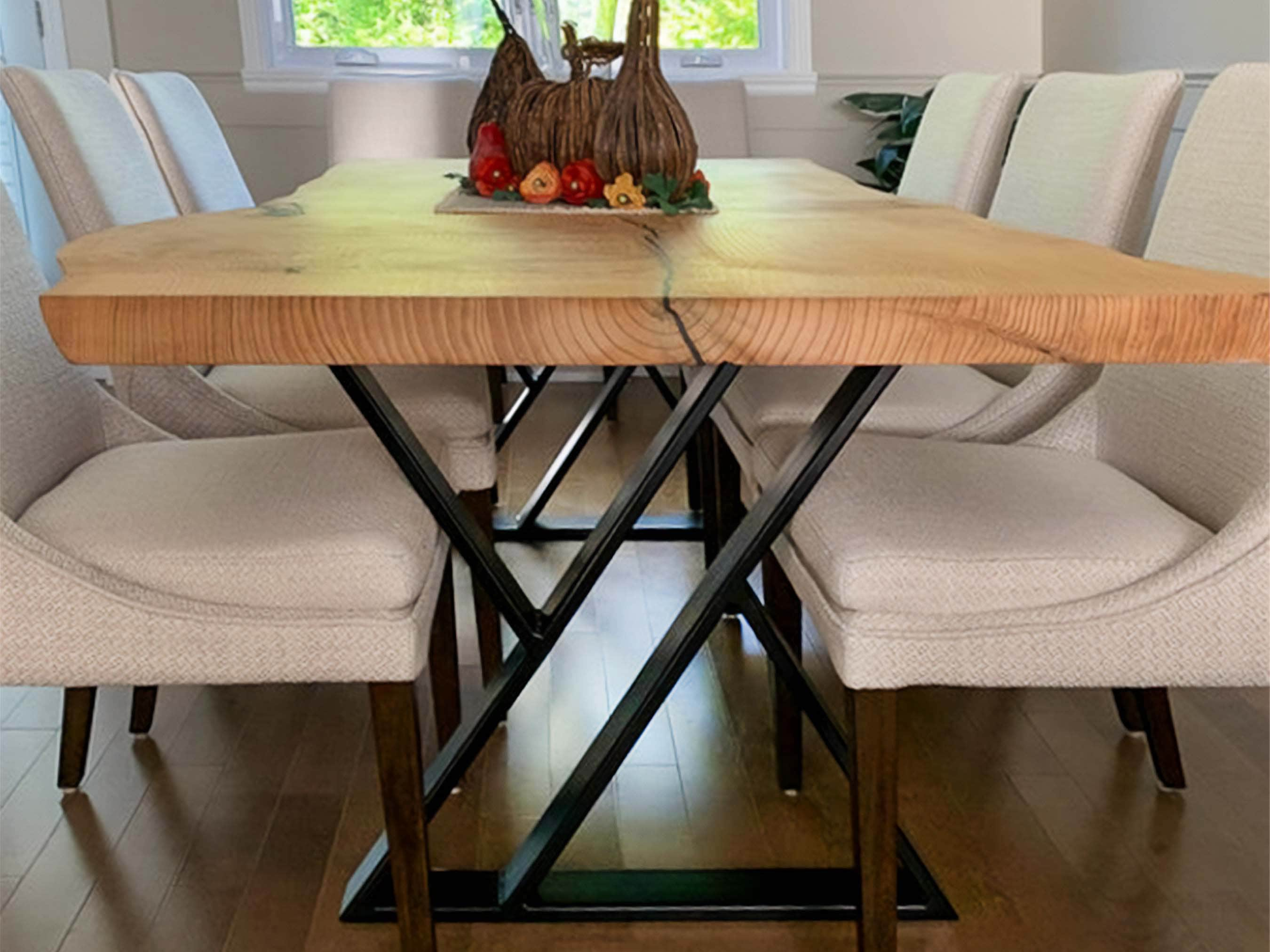A Detailed Look at Dining Table Leg Styles: Discovering the Ideal Match
Selecting the best table leg design is vital for both visual appeal and useful functionality. Typical 4 legs provide timeless sophistication and stability, while the stand base gives boosted legroom and a contemporary look. For those with bigger tables, trestle legs make sure sturdy assistance, whereas barrette legs introduce a mid-century contemporary ambiance with their minimal style. The x-shaped legs mix contemporary design with enhanced security. Each of these choices brings distinct advantages, making the choice much more than simply an issue of preference. Explore better to find which style perfectly complements your dining room and lifestyle.
Standard Four Legs
Amongst the different kinds of dining table leg designs, the conventional four-leg style continues to be an ageless choice for several houses. Four legs give balanced support, guaranteeing the table continues to be stable and qualified of bearing considerable weight (dining room table legs).
From an aesthetic point of view, the standard four-leg layout can be quickly adapted to different indoor designs. Whether crafted from timber, metal, or a mix of materials, these legs can be elaborately sculpted, sleek and minimalistic, or anything in between. Their flexibility enables them to complement both rustic and contemporary setups flawlessly.
Additionally, the uncomplicated framework of the four-leg layout promotes ease of motion and positioning within a space. Unlike even more complicated bases, this design decreases obstructions, giving ample legroom for diners. In summary, the typical four-leg table leg style weds enduring sophistication with useful functionality, making it a sharp option for those looking for both type and feature in their dining furnishings.
Stand Base
Frequently commemorated for its classy and space-efficient layout, the pedestal base is a notable option to the typical four-leg setup in eating table leg styles. Without corner legs, restaurants are managed greater freedom of movement, making it a perfect selection for round and oblong tables that promote more intimate and comprehensive gatherings.
The central column itself provides a canvas for complex designs and creative expressions, including an aspect of aesthetic passion beneath the table. In summary, the pedestal base incorporates functionality with style, making it a fine-tuned and sensible choice for varied eating atmospheres.
Trestle Legs
Trestle legs offer a durable and ageless foundation for dining tables, characterized by their straight cross-bracing and tough support beams. Originating from medieval times, this design has developed yet retained its essential structure, making it a perennial fave in both typical and modern settings. The central trestle beam, typically supported by two or even more vertical messages, provides extraordinary stability, enabling larger table lengths without the need for extra legs.
A significant benefit of trestle leg tables is the ample legroom they offer. Unlike tables with four corner legs, the lack of obstructions at the table's edges supplies unblocked space for chairs and restaurants, boosting convenience and accessibility. This makes trestle tables excellent for suiting bigger events, whether in an eating room or a reception hall.
The aesthetic adaptability of trestle legs is significant. Offered in a range of materials such as timber, steel, and composite, they can be completed to match a wide variety of indoor designs. From rustic farmhouse to sleek modern styles, trestle legs try here can be customized to match private tastes. Their long-lasting charm and functional benefits make trestle legs an engaging option for those looking for both design and practicality in their eating table.
Barrette Legs

The allure of hairpin legs hinges on their simpleness and versatility - dining room table legs. Available in a variety of materials, including steel and brass, they can be completed in countless colors to match various interior styles. Whether coupled with a rustic wooden table top or a contemporary glass surface area, hairpin legs effortlessly blend functionality with a touch of vintage appeal
Resilience is an additional noteworthy function of barrette legs. Regardless of their delicate look, these legs are engineered to bear significant weight, making certain the table remains secure and protected. Additionally, they are reasonably very easy to mount, making them a preferred option for DIY enthusiasts and expert furnishings makers alike.
X-Shaped Legs

Created from materials such as steel, timber, or a combination of both, X-shaped legs can be customized to match numerous layout preferences. Steel legs often lend a streamlined and industrial feeling, he has a good point ideal for loft-style apartments and contemporary dining spaces. On the other hand, wood X-shaped legs provide a warmer, a lot more rustic charm, appropriate for farmhouse or diverse insides. The adaptability in materials permits home owners to personalize their dining tables to better fit their general design scheme.
Furthermore, the design behind X-shaped legs guarantees also weight circulation, reducing the danger of tottering and boosting toughness. This makes them specifically fit for larger table that need additional assistance. Fundamentally, X-shaped legs blend functional design with contemporary visual appeals, making them an ageless choice for varied dining environments.
Conclusion
A detailed understanding of table leg styles exposes the distinctive attributes and benefits of each style. Typical four legs use security and classic allure, while stand bases give legroom and useful source a streamlined look. Trestle legs ensure robust support for larger tables, and hairpin legs present a mid-century modern-day aesthetic. X-shaped legs combine contemporary layout with enhanced security. Choosing the appropriate leg design makes certain both functional and visual complete satisfaction in any kind of eating room.